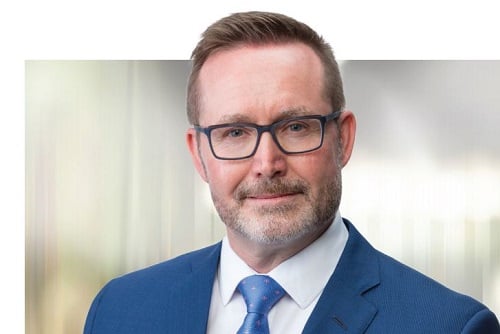

For nearly 50 years, Wylie-Crump has specialized in the construction and development industries. Partner and principal Nolan Heuchert tells IBC about the key trends affecting this dynamic sector today
IBC: How did you develop your specialty in construction insurance?
Nolan Heuchert: I’ve been in the insurance industry since 1994, starting my career with a large international insurance brokerage. In the initial 15 years of my career, I learned my craft in the large brokerage community, and working for a large firm allowed me to be very specialized in servicing the construction sector. Throughout my entire 24 years in the industry, I have always worked with and provided services to the construction sector … if I had to lean toward an expertise, it would be in the area of heavy civil, such as road and bridge construction.
My personal claim to fame was the 2010 Vancouver Winter Olympics; I was involved with the Vancouver Olympics organizing committee, and I assisted with the ownercontrolled insurance programs for the various projects and venues that were undertaken in the buildup to the 2010 games.
IBC: What trends are you seeing in the construction sector today?
NH: In BC, Western Canada and across most of the country, there’s a foreseeable problem with an aging workforce and demographic. Not many new entrants are coming into the construction industry, so labour is becoming more and more of an issue, and construction firms are stretching their resources further and further. As a result, we are seeing two trends: One, we are seeing construction firms going into default or bankruptcy. Is that a result of resources being stretched too thin? We think so.
Also, we are seeing a fair amount of amalgamation in the industry, further enhanced by international firms coming to Canada and acquiring Canadian construction companies. That’s partially a solution to the changing demographic, but it’s an issue we are seeing across the industry as a whole.
From an insurance risk perspective, one trend I am witnessing is the push towards a design-build model, whether a formal contract model or an informal model, whereby the designer and contractor are almost becoming one entity. Some firms are embracing this wholeheartedly, and some are fighting the trend. As a result, we have to look more and more at not only standard property & casualty coverage, but also professional liability as a common coverage maintained by the constructors and even trade contractors.
IBC: How have recent changes in the insurance industry affected the construction sector?
NH: Insurance is also facing similar changing demographics. There seems to be a disappearing level of experience and expertise as a younger, more mobile workforce comes into the insurance industry.
We are also starting to see a tightening of the insurance market when it comes to the construction sector. It’s not fully realized yet, but I expect we will see more changes in the next 12 to 24 months with less capacity, higher rates and more coverage restrictions.
IBC: From an insurance perspective, what are the unique aspects of the construction industry?
NH: As mentioned previously, the line between contractor and designer is blurring, and it’s a challenge for some in the insurance industry to look at the two cohesively. We try to align either individual products or combined products that can better service the needs of the construction industry by looking at those two together.
The other area I find unique is contractual risk exposures imposed upon the contractors, because contract terms are critical in determining the risk allocated to each party in a project. Sometimes there’s not enough attention paid to those contractual terms, and they create confusion or misalignment on the risks being allocated to the various levels of construction.
IBC: What’s a common challenge you face in construction insurance?
NH: We find that there’s a varying base of knowledge among underwriters; we are constantly educating the insurance industry about what actually occurs in a construction project. One example is that we work with a number of blasting contractors who work with explosives. With the level technology and monitoring available, blasting can be a very controlled and managed process, whereas an underwriter might think of it as things blowing up uncontrollably. It’s not as bad as it seems at first. It’s about understanding what is a good risk versus a bad risk.
Because of our knowledge base and specialization in the industry, we pride ourselves on knowing where the best fit is in the marketplace. That is constantly changing, but we strive to stay on top of which market wants to look at which risks. If a good underwriter moves from one market to another, we will follow that expertise to make sure our clients and projects are getting the best fit.
